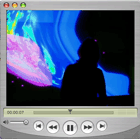ALBUQUERQUE, N.M —Members of the media will get rare inside look at Sandia National Laboratories on Wednesday, Nov. 7, when several new large-scale testing facilities will be showcased.
Sandia’s large-scale testing facilities were originally created to validate and test nuclear weapons modeling and simulation code. Now, each also serves as test bed and laboratory for projects in homeland security, energy, and basic science.
The media will visit three new and revitalized experimental capabilities: Validation and Qualification Science Experimental Complex (VQSEC), Thermal Test Complex, and Z machine. Engineers from each facility will show visitors around their facility and discuss the types of projects done there.
Sandia is a National Nuclear Security Administration laboratory.
Members of the media interested in attending the event must call Iris Aboytes at (505) 844-2282 no later than Monday, Nov. 5, at 4 p.m. Space is limited to 20 media representatives. Members of the news media covering the event must arrive at the parking lot at IPB, 10600 Research Road SE, at 7:30 a.m. on Wednesday, Nov. 7.
Sandia President and Laboratories Director Tom Hunter will speak at the Joint Computational Engineering Laboratory (JCEL) Vislab, the visualization center where Sandia’s advanced modeling and simulation capabilities meet up with data from its extensive large-scale testing facilities. The integration of advanced supercomputing and numerical simulation capabilities with data from these large-scale experimental test facilities gives Sandia a powerful predictive engineering capability that is needed to perform its mission on behalf of the country.
The media event will showcase:
Validation and Qualification Science Experimental Complex
Sandia’s VQSEC comprises including the Aerial Cable Facility, the Rocket Sled Track Complex, the Thermal Test Complex, the Centrifuge Complex, and the Mechanical Shock Facility. VQSEC is used to provide controlled environments to evaluate small and large test items undergoing high-velocity impact, exposure to extreme temperatures, or undergoing high-g accelerations. Experiments can be designed through the use of modeling and simulation codes to simulate unique scenarios and to provide the maximum data from each test. The combination of physical simulation (experiments) and virtual simulation (computational modeling), along with the diagnostic instrumentation capabilities at this complex make it unique for research, test, and evaluation purposes.
Thermal Test Complex
The Thermal Test Complex is a multilaboratory, office, and test facility that has the ability to test full-scale weapons systems indoors. It offers three thermal modes (gas fire, liquid fire, and radiant heat) with systems to accurately control test conditions and analyze the fires. The complex features a 7-story, 60-foot-diameter test cell, called the FLAME cell, for fire testing and has water-cooled walls and airflow equipment. Laser diagnostic equipment is used in the cell to help understand the burning process. A 5.2 megawatt radiant heat lamp array permits radiant heat tests. The third part of the thermal complex is the Cross Flow Fire Test Facility, or XTF. This 25-foot-high-by-25-foot-wide facility is 84-feet long and includes a low-speed wind tunnel for testing objects with hazardous components, including explosives.
Z machine
Sandia’s Z machine provides data to feed into supercomputers that simulate nuclear weapons explosions, helping to put off the day of actual testing. The machine also tests materials under extreme conditions, offering technical insights to researchers ranging from weapon system scientists and engineers at Sandia, Los Alamos, and Lawrence Livermore national labs, to astronomers interested in understanding the composition of planets like Jupiter and Neptune. A just-completed refurbishment makes Z, the most powerful generator of X-rays on Earth, even more powerful, enabling more complex experiments. In addition, a new development – a rapidly firing circuit developed in Siberia – will be shown that opens the possibility of using a method like Z’s in the production of electrical energy from seawater from peacetime nuclear fusion.
JCEL VisLab
The JCEL Vislab is designed as a fulltime production visualization facility and provides a visual interactive environment for weapons simulation. JCEL houses some 175 researchers and support staff in its 60,000-plus square feet of space. The $30.8 million JCEL facility was funded by DOE/NNSA’s Advanced Simulation and Computing program and represents an integral part of the Microsystems and Engineering Sciences Applications (MESA) project. During the VisLab demo, Mark Boslough will show his supercomputer simulations of what happens when an asteroid of some size hits earth, revealing simulations that do the best job yet in explaining why so much land in Siberia was scorched in the early 20th century by an asteroid strike, called the Tunguska event.
Movie Clips
The following clips offer a review of Sandia technologies to be showcased Nov. 7.
Note: Apple’s Quicktime is available for download from Apple’s website here.


